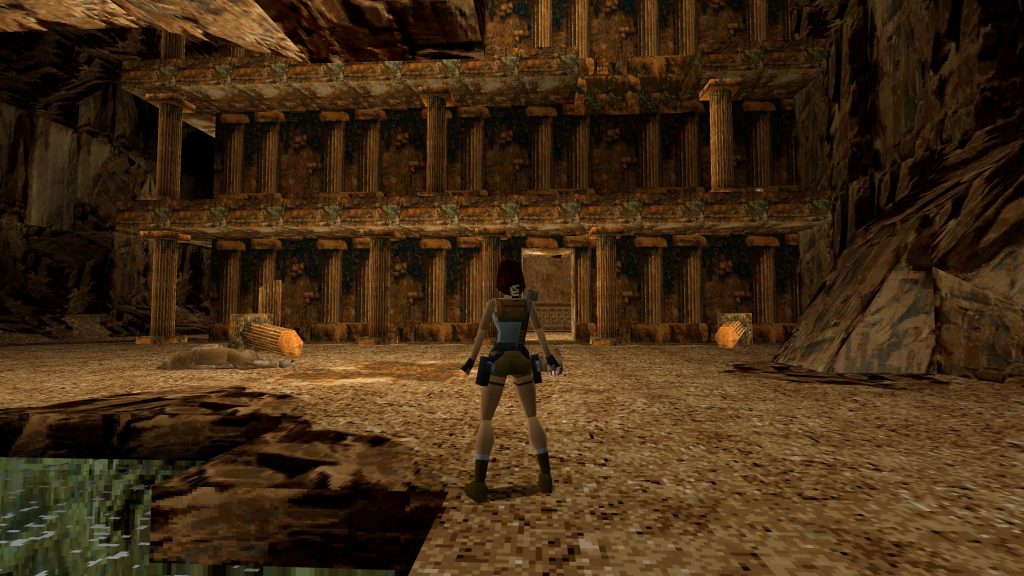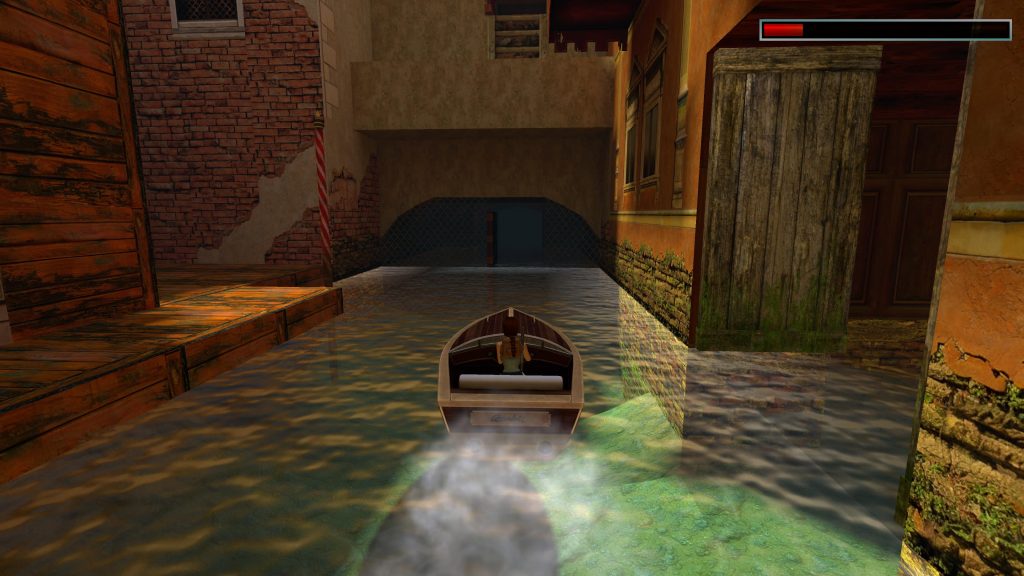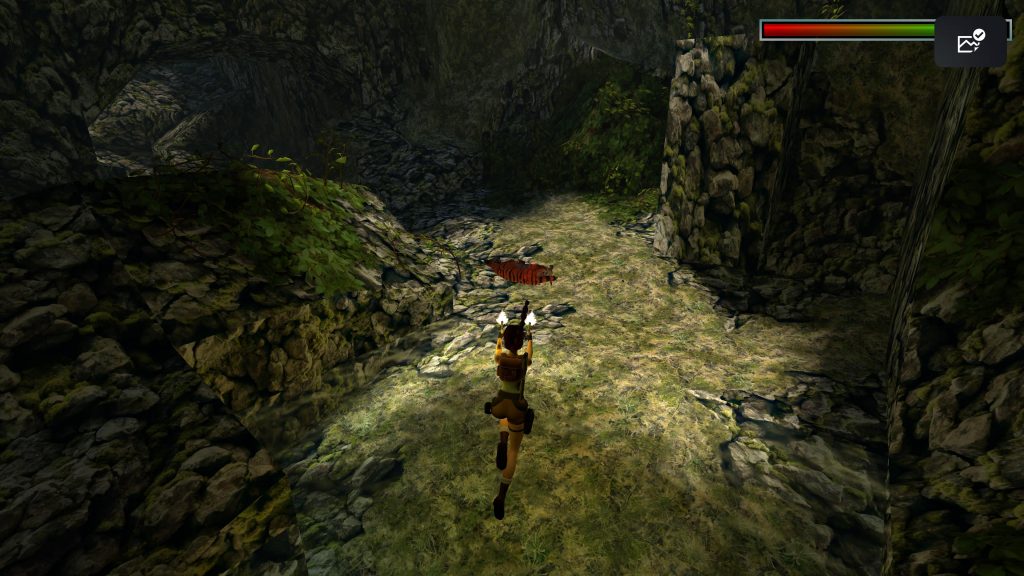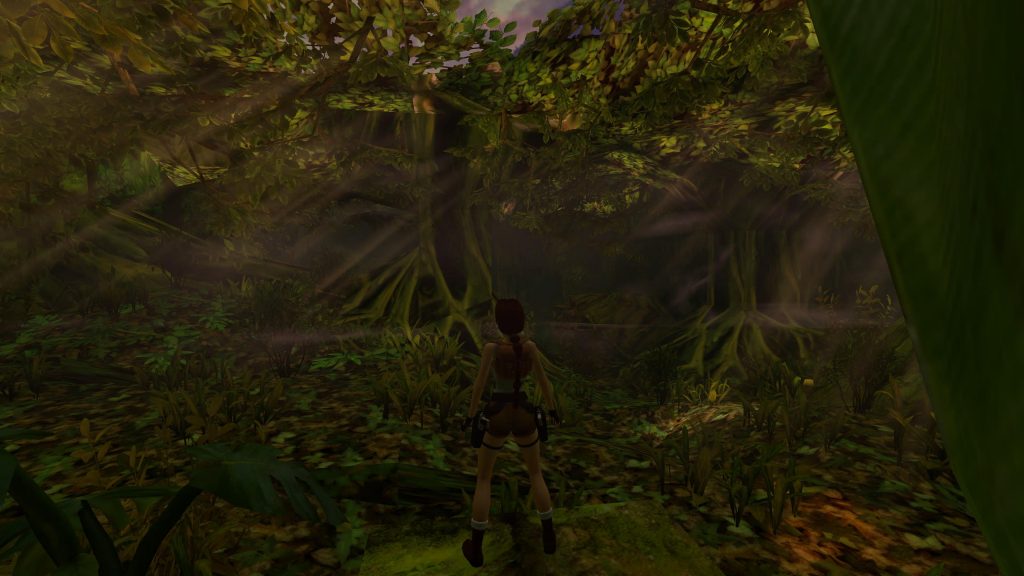I was the right age to get into it but the Tomb Raider series managed to always escape my grasp. By the time I was a PC gamer, I was into shooters. I got a PlayStation for anything but platformers. The franchise itself has seen plenty of highs and lows but Tomb Raider I-III Remastered starts at the glorious beginning, long before an annual release schedule fractured Core Design. Aspyr are handling the restoration and I feel they’ve done a good job at retaining the authentic Tomb Raider experience.
 They really don’t make games like Tomb Raider any more. Platforming in games nowadays is a means to an end with the reward being a cutscene or a well-crafted scripted sequence. Lara Croft’s first adventure brings it all back. The methodical act of traversal is smoothed over a little with a modern control scheme. By default Lara has tank controls supplemented by an assortment of jumps. If you can get used to it, the default system is fairly capable and consistent.
They really don’t make games like Tomb Raider any more. Platforming in games nowadays is a means to an end with the reward being a cutscene or a well-crafted scripted sequence. Lara Croft’s first adventure brings it all back. The methodical act of traversal is smoothed over a little with a modern control scheme. By default Lara has tank controls supplemented by an assortment of jumps. If you can get used to it, the default system is fairly capable and consistent.
Unfortunately for me, I’ve long since fell out of the habit. The modern scheme is largely where I lay although there are situations where it can feel compromised. Jumps and side-hops can still be accomplished but they require Lara’s guns to be drawn. You can’t turn on the spot but holding down the walk button does help regain some of that lost precision. It’s enough to get by but I find the controls section of the menu is a little lacking in explanations.
 For example, Tomb Raider II introduces vehicles. My first encounter with one had me struggling to figure out which button let me ride it. As a result, I found myself googling the answer. Aspyr’s website has a control guide available which does help plug the gaps the in-game menu leaves behind. I wish it didn’t require an external source to find those things out. On the plus side, buttons are available to be fully remapped and there are options for sensitivity. These feel very accommodating for new players who may be struggling with how quick Lara can move when using analogue controls.
For example, Tomb Raider II introduces vehicles. My first encounter with one had me struggling to figure out which button let me ride it. As a result, I found myself googling the answer. Aspyr’s website has a control guide available which does help plug the gaps the in-game menu leaves behind. I wish it didn’t require an external source to find those things out. On the plus side, buttons are available to be fully remapped and there are options for sensitivity. These feel very accommodating for new players who may be struggling with how quick Lara can move when using analogue controls.
The camera can also be a hindrance. You have free camera movement but it respects the level geometry. In tight spaces, it can struggle to settle. Clicking in one of the analogue sticks will attempt to centre it behind Lara but only if there’s room to do so. I tended to suffer through those moments but, when the games rely more on corridors, finding the right viewpoint can take longer than I’d like.
The three games on offer also include their previously PC-only expansion packs. This makes for a pretty stacked package with dozens of hours to spend climbing into forgotten civilisations. Tomb Raider offers the most explicit raiding of tombs. Compared to the other two, the first game gives that aspect a genuine focus. I’ve spent the most time with it and I was surprised just how meditative the exploration can be.
There’s a great sense of atmosphere across the three games but the solitude you get from assessing an impending challenge is something that still strikes a chord. Admittedly, the middle section of that game can stifle the pacing. The formula quickly settles into finding a handful of keys or objects to open the level’s final door. It can be repetitive in mission goals but the diverse locations really shine.
 Combat struggles to reach such heights. Lara’s dual pistols are iconic and the arsenal can be built up over time. Unfortunately, firefights devolve into trading damage and occasionally back-flipping to put some distance between you and your foes. It’s not very clever and the other two games in this collection rely upon it more and more. In particular, Tomb Raider II‘s contemporary locations feature human opponents prominently. They take plenty of hits and will happily shoot you through geometry. There’s less of a wonderful globe-trotting aspect and the series appears to venture further into action territory.
Combat struggles to reach such heights. Lara’s dual pistols are iconic and the arsenal can be built up over time. Unfortunately, firefights devolve into trading damage and occasionally back-flipping to put some distance between you and your foes. It’s not very clever and the other two games in this collection rely upon it more and more. In particular, Tomb Raider II‘s contemporary locations feature human opponents prominently. They take plenty of hits and will happily shoot you through geometry. There’s less of a wonderful globe-trotting aspect and the series appears to venture further into action territory.
Tomb Raider III is the one I had the least prior knowledge of. Here, Lara’s moveset includes a crawl and some rudimentary stealth which isn’t always reliable. The missions take place over larger venues and the opening levels in India can be quite stunning with the remastered visuals. It is a less cohesive adventure, coming at a time when the frustration within Core Design was building. Still, I’m happy to see it through now I have a taste for these classic games.
The visuals come in two flavours. By default, the remastered graphics take the original textures and upscale them really well. It’s still a series constrained by 90’s geometry but the surroundings now carry a dynamic look to them. Dark corners can be pitch black and they’ve added holes in the ceilings of caves and 3D vegetation to give locales a real depth. Draw distance has been improved, although it still retains some of that original claustrophobia. Cinematics are upscaled with in-engine cut-scenes showcase the new character models greatly. Subtitles are available and there’s also an option to highlight elements you can interact with. There’s some good quality of life improvements, including the photo mode which can be used to scout ahead in levels. Saving can also be done at any time.
 The classic visuals go for an approximation of the original look. It doesn’t contain the Playstation’s jittery textures and doesn’t run as smooth as the updated graphics. It also doesn’t look to emulate any late-90’s 3D acceleration so edges aren’t smoothed off with anti-aliasing. It’s not quite the game as you remember it but it comes close enough. Honestly, the thing that strikes me the most is how atmospheric the levels and music feel. There’s a genuinely grand soundtrack here. In classic visuals, there’s a sense of the light being overdone and a little flat. In some cases, the modern option can clutter up the jungle environments.
The classic visuals go for an approximation of the original look. It doesn’t contain the Playstation’s jittery textures and doesn’t run as smooth as the updated graphics. It also doesn’t look to emulate any late-90’s 3D acceleration so edges aren’t smoothed off with anti-aliasing. It’s not quite the game as you remember it but it comes close enough. Honestly, the thing that strikes me the most is how atmospheric the levels and music feel. There’s a genuinely grand soundtrack here. In classic visuals, there’s a sense of the light being overdone and a little flat. In some cases, the modern option can clutter up the jungle environments.
Tomb Raider I-III Remastered is a rock solid preservation of three beloved products. They are certainly of their time but I wouldn’t let that discourage any curious players. I found value in going back to that period where platforming in games was considered a navigation challenge to overcome. There is a precision that the controls can deliver but it demands attentiveness from the player. It’s been fascinating to see how the series began and evolved over time and, whilst this collection doesn’t cover all the beats, it’s a good start.
+ Modern visuals deliver an impressive update.
+ Wonderfully atmospheric.
+ Plenty of content at a budget price.
- The free camera does not handle tight quarters very well.
- Combat remains basic and clumsy.
- Certain areas can be tough to read with the remastered visuals.

